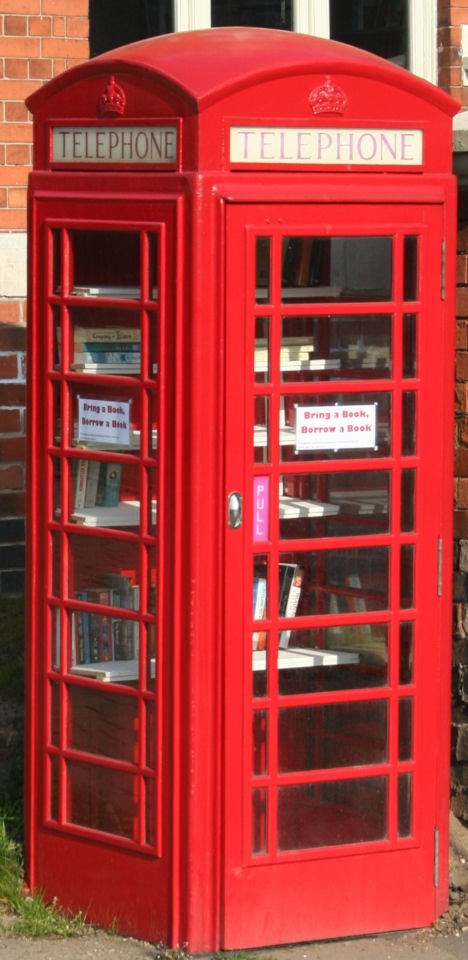The Phone Box
A brief description of the telephone kiosk library
In 2009, under BT’s ‘Adopt a Kiosk’ scheme, Plumtree Parish Council purchased the village telephone box for the nominal sum of £1. The payphone unit had already been removed so the kiosk was spruced up inside and out and given a coat of bright red (BT approved) paint. After this, there was an interval of a couple of years while the residents and the Parish Council decided what to do with it.
Eventually, in 2012, some bookshelves were installed, followed closely by a batch of books, and thus the Plumtree Telephone Kiosk Library came into being.
The principle is simple: if you have any unwanted books that you think other people might like to read, just put them (neatly) on one of the bookshelves. Similarly, if you want to borrow a book, just take it away with you and replace it when you've finished reading it.
History of the kiosk
The Plumtree phone kiosk is a type known as K6 and its design was commissioned by the General Post Office in 1935 to commemorate the Silver Jubilee of King George V; thereafter this type of kiosk became known as the ‘Jubilee kiosk’. Ironically, King George didn’t live long enough to see any of his commemorative kiosks installed – he passed away on 20th January 1936.
The Jubilee kiosk became the first standard telephone box to be installed throughout Britain - between 1936 and the end of production in 1968, there were nearly 70,000 of them. The K6 kiosk is truly iconic in that it is recognisably British on a global scale, along with Routemaster London buses and Post Office pillar boxes – all of them painted red.
The K6 was designed by English architect Sir Giles Gilbert Scott and was approved by the Royal Fine Arts Commission.
A tenuous local connection
Giles Gilbert Scott (1880 – 1960) was a bastion of the architectural establishment in early 20th century Britain. He fused tradition with modernity by applying historic styles to industrial structures in his designs, which ranged from Battersea power station (now the Tate Modern) to the K6 telephone kiosk.
In 1902, Scott entered the competition for a new Anglican Cathedral in Liverpool with his "Design for a Twentieth Century Cathedral". To his surprise, his design was selected by the assessors, Norman Shaw and George Frederick Bodley. However the Liverpool Cathedral Committee were a bit worried by the choice on account of Scott's age and lack of experience and religion: he was still only twenty-two and a Roman Catholic.
In the event, Bodley was appointed joint architect with Scott for the project. The collaboration was not a happy one, and Scott was on the point of resigning in 1907, when Bodley died. Scott became sole architect and promptly redesigned everything above the arcades.
The local connection? Well, together with Thomas Garner, George Frederick Bodley was responsible for alterations, restoration and decoration of Plumtree Church in the 1870s. Hopefully theirs was a more harmonious partnership than that of Bodley and Scott.
Technical stuff
To date, some 2,500 Jubilee kiosks have been granted 'Grade II listing' status and there are over 11,000 examples remaining on our streets.
The K6 kiosk is constructed of cast-iron sections, bolted together, standing on a concrete base. Its general form is a four-sided rectangular box with a domed roof. Three sides of the kiosk are glazed, and the door is made of teak, with a metal "cup" handle. The weight of the kiosk without apparatus is approximately 13 cwt (660 kg).